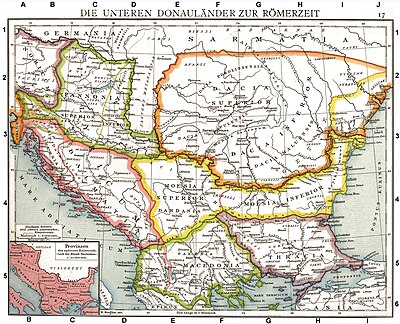Historical evidence
In 60 BC, when the king of the Dacians Burebista succeeded in uniting his own people with their kindred Getae and Burs into one kingdom he began to put pressure on the Celtic tribes of the Danubian Basin. He advanced against the Taurisci and Boii, gaining his most notable success near to the river Tisza [8] After defeating the Taurisci (Cotini) and Boii, the Dacian King Burebista forced some of them to leave southwestern Slovakia. A Celto-Dacian cultural horizon was created in the conquered territory, Dacian settlement here continued into the second decade of the new era. [9]
Posidonius record that, at his time, Celtic (Boii, Scordisci, and Taurisci) were intermingling with Thracians on both sides of the Danube. Later, Strabo (about 20 AD), repeat this piece of information, yet he uses the variant Ligyrisci instead of the Posidinius's variant Teurisci. [10]
According to Ptolemy (140 AD), Teurisci of Dacia bordered Anarti of Dacia on the east. Further east of them were the Dacian Costoboci. [11]
This page is based on this
Wikipedia article Text is available under the
CC BY-SA 4.0 license; additional terms may apply.
Images, videos and audio are available under their respective licenses.

